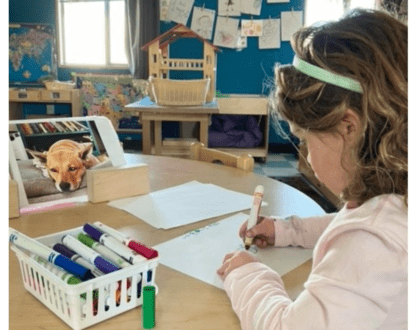What Dogs Smell

By: Judy Hamontre, AVHS Volunteer
Dogs are mans’ best friends. Their love is unconditional, their loyalty is unquestionable and their sense of smell is unthinkably rich and amazing.
A dog’s sense of smell is so sensitive that when he smells another dog, he can determine that dog’s gender, health, disposition, where the dog has been and what he has eaten.
A dog can sniff a tree and know what other animals are in the neighborhood. Smelling a human’s pant leg can tell him where that person lives and if he has dogs.
That keen canine nose enables a pup to locate his mother and her milk and distinguish her from other nursing mother dogs.
Dogs have a strong “homing” instinct because they can move their nostrils independently which helps them determine the direction of an odor, making their nose their compass.
How far a dog smells depends on conditions such as wind and type of scent, but they have been reported to smell objects and people over 12 miles away.
Dogs’ olfactory systems work so well that they can be trained to pick up odors as little as a pictogram which is a trillionth of a gram. This ability to smell such tiny traces of a particular scent has allowed them to locate items buried as far as 40 feet underground and people who drowned in over 80 feet of water as well as follow a trail over a week old.
Dogs have excellent scent memory. They even perceive the time of day with the help of their noses.
Canines can tell one human from another because each person has his own unique scent which comes from the oils, sweat and breath his body produces. It doesn’t matter what type of scented lotion or perfume, a person puts on, that individual’s scent still comes through.
Dogs also sense fear and anxiety in their humans because they smell adrenaline which is produced as a result of the “flight-fight” response.
Because the human odor signature changes with certain medical conditions, dogs can be trained to detect and alert diabetic owners to low sugar levels and epileptic individuals to imminent seizure activity.
Some dogs have been trained to seek out odors associated with several cancer types.
Dogs smell bacteria and are now being trained to potentially sniff out COVID-19 in travelers as a form of non-invasive screening.
Dogs find missing people. They detect human remains. They sniff out the tiniest trace of drugs no matter where concealed nor how masked by other odors and find contraband in airports and prisons.
They detect explosive materials and accelerants used for arson. Their “nose” is used in agriculture, dairy farming and wildlife biology. The list goes on and on.
Dogs and their noses are mans’ loyal friends.
Recommended Posts

Good Pets. Good Kids. Charming Portraits.
April 13, 2024

Reflecting on 2023
April 06, 2024

Socializing the Shy and Fearful Cat
March 31, 2024
